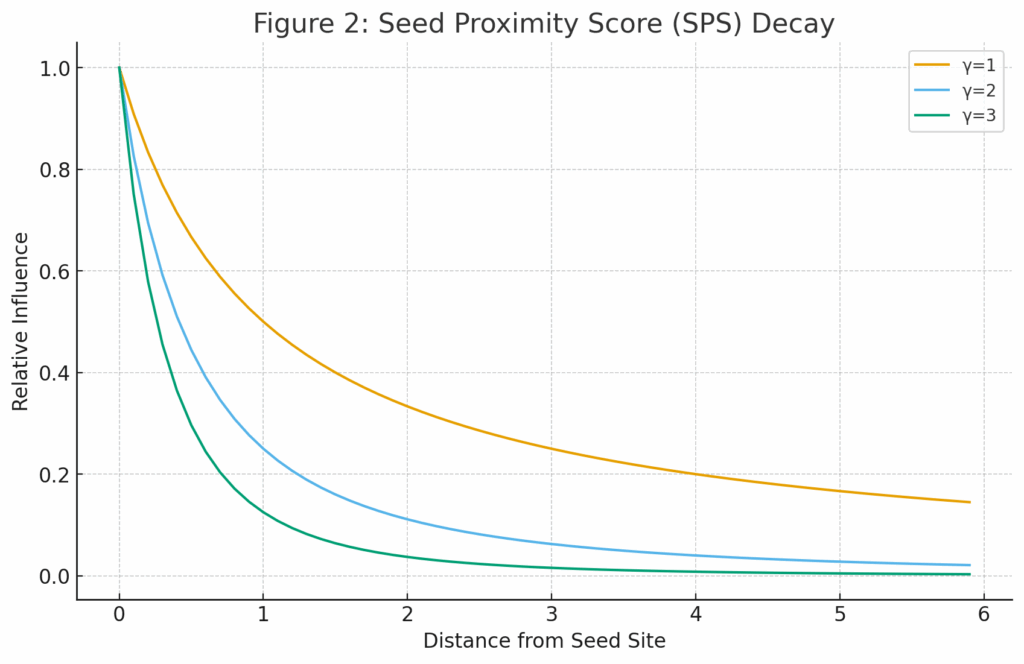Full research paper available on Zenodo: https://doi.org/10.5281/zenodo.17401322
When you publish a new page online, how long does it take before Google notices? For some news outlets, it happens in minutes; for smaller sites, it can take days—or weeks. Behind this mystery lies something researchers are only starting to quantify: proximity to ‘seed sites.’
Search engines like Google begin their exploration of the web from a handful of trusted ‘seed’ sites—reliable, high-quality pages that act as the web’s central hubs. From there, the crawl spreads outward, following links to discover new pages. If your site sits close to those trusted hubs in the link graph, Google is more likely to find and index it quickly.
Independent researcher David Vesterlund has proposed a new way to measure this distance. His concept, the *Seed Proximity Score (SPS)*, captures how many link-steps separate a site from the web’s core seeds. Sites with high SPS values appear to enjoy dramatically shorter indexing times—sometimes hours faster than competitors.
In his paper, published on Zenodo, Vesterlund outlines how this idea could reshape the way SEO professionals think about authority and crawling. Instead of focusing only on backlinks or domain rating, it’s about the site’s actual position in Google’s trust network.
Figure 1: How Seed Sites Spread Trust
Imagine a web graph where a few big circles—major newspapers, universities, and public institutions—sit at the center. Links radiate out from them to smaller sites. The closer a site is to these trusted centers, the faster Google reaches it. This explains why major Swedish news outlets get indexed in minutes while niche blogs wait days.

Table 1: Factors Affecting Indexing Latency
| Factor | Influence on Indexing Speed |
| Seed Proximity | Closer sites are indexed faster |
| Crawl Budget | Popular and frequently updated sites get more crawl visits |
| Freshness (QDF) | News and trending topics are prioritized |
| JavaScript Load | Heavy scripts delay or block crawling |
| Internal Linking | Deep pages take longer to be discovered |
| Server Performance | Slow or unstable servers limit crawl frequency |
Figure 2: The Seed Proximity Score (SPS) Decay
The Seed Proximity Score decreases the further a site is from the web’s trusted core. A low decay rate means seed influence stretches far into the web; a high decay rate confines it to the first few link steps. This mathematical relationship suggests why getting links from trusted domains has a compounding effect on visibility.

Figure 3: Freshness vs. Proximity
Not all fast indexing comes from seed proximity. Google also uses freshness boosts, known as Query Deserves Freshness (QDF). This system temporarily prioritizes breaking news, even on less trusted sites. But when the QDF effect fades—often within hours—only those close to seed sites maintain strong crawling frequency.

Why It Matters
For SEO professionals, the findings highlight that link quality isn’t just about authority metrics—it’s about connectivity. If you can shorten your site’s distance to the web’s trust core, you may unlock faster discovery, fresher indexing, and better resilience in algorithm updates.
Vesterlund’s framework could even inspire new SEO tools that quantify seed proximity directly, combining link data with indexing metrics to estimate real-world visibility potential.
Conclusion
While the exact list of Google’s seed sites remains secret, studying their effects offers a rare glimpse into how trust and discovery spread across the web. As researchers and SEO professionals collaborate on this measurement proposal, we might finally gain a measurable indicator for one of Google’s oldest—and most powerful—ranking signals.

